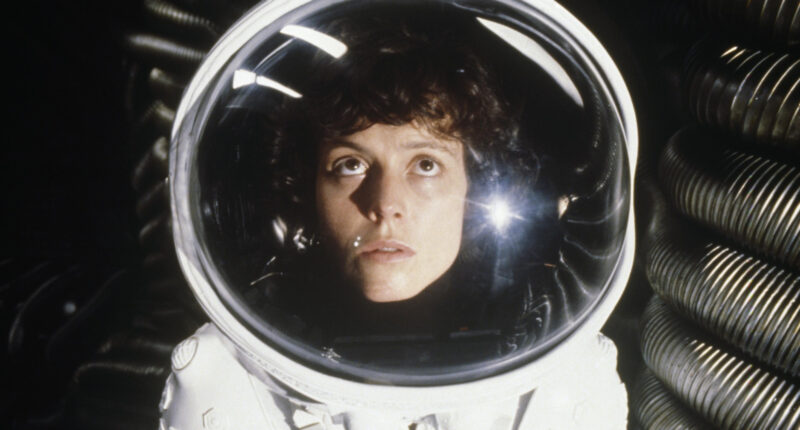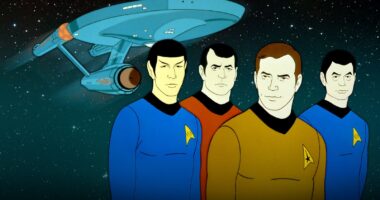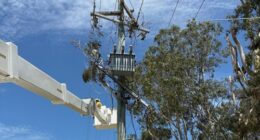Share this @internewscast.com
Since its debut in 1979, Ridley Scott’s “Alien” has grown far beyond its original terrifying tale, becoming a major force in the science fiction genre. The story, which began with one woman’s battle against a dangerous creature in the isolation of space, has transformed into a reflection of human arrogance and greed. With nine films, a Hulu series, and an acclaimed video game, the “Alien” saga boasts some of the most intricate world-building in sci-fi.
Initially emerging when horror sequels were often just attempts to capitalize on a franchise, the “Alien” series has consistently added layers of complexity to its universe, dominated by corporate power. As Quentin Tarantino noted on Eli Roth’s History of Horror podcast, the series offered a rich character and mythology, revolving around the aliens and their origins, with plenty of room to expand the narrative.
The best way to watch every movie in the “Alien” franchise to get the most in-depth story explanation is in order of release:
-
Alien (1979)
-
Aliens (1986)
-
Alien 3 (1992)
-
Alien Resurrection (1997)
-
Alien vs. Predator (2004)
-
Alien vs. Predator — Requiem (2007)
-
Prometheus (2012)
-
Alien: Covenant (2017)
-
Alien: Romulus (2024)
What is the chronological order to experience the canon Alien franchise?
Although later films in the “Alien” series include prequels, it’s recommended to watch them according to their release dates initially. The recent FX series “Alien: Earth” has helped streamline the extensive mythology, but multiple creators have influenced the franchise, introducing plot inconsistencies over time. Watching in release order helps minimize these gaps, leading to a more cohesive understanding of the alien and corporate dynamics at play.
Seeing the films in the order they were released reveals the diverse writing and directing styles that have influenced the franchise. This approach allows audiences to explore the central aliens, influential corporations, and retrofuturistic technology through the perspective of the resilient Ellen Ripley (Sigourney Weaver). As she navigates missions on the Nostromo, the LV-426 colony, and Fiorina 161 prison planet, the first film stands out with its intense suspense and is often considered an ideal entry point into the broader “Alien” universe.
What is the chronological order to experience the canon Alien franchise?
After experiencing the entire series, especially the first four films followed by “Prometheus” and “Alien: Covenant,” it might be interesting to watch the films chronologically. Starting with “Prometheus,” viewers encounter the ancient Engineers and Peter Weyland (Guy Pearce), whose quest for immortality becomes central to the series’ lore.
Focusing on the core elements of the Weyland-Yutani corporation and the xenomorphs, while excluding the “Alien vs. Predator” films, fans can appreciate each film’s chronology based on the year in which its story occurs.
Completionists who want to check out the entire canon universe can view the FX series “Alien: Earth” (set in 2120) just before the 1979 “Alien” film. Play through the canon video game “Alien: Isolation” directly after, since its storyline, featuring Amanda Ripley, is set in 2137 while Ripley is waiting in stasis to get picked up at the beginning of “Aliens.”
How to watch the Alien v. Predator movies chronologically
Although “Alien” and “Predator” weren’t originally set in the same universe, the franchises have inched toward each other over the years, starting with a xenomorph skull spotted on the Predator’s ship in “Predator 2.” Whether these movie continuities are separate or not has been a point of contention among fans for decades, despite two non-canon “Alien vs. Predator” films attempting to build a bridge. Since the “Alien” universe has done little to explain the links between these apex hunters, many fans find that trying to reconcile the two creates some of the most confusing moments in the “Alien” franchise. However, it looks like Dan Trachtenberg, who directed the series-elevating “Prey” and “Predator: Killer of Killers,” may have plans to remedy the xenomorph-Yautja gap once and for all. His upcoming film, “Predator: Badlands,” introduces a Weyland-Yutani synth into the young predator’s storyline.
Here’s the chronological watch list for the “Predator”-“Alien” universe:
-
“Prey” (1719)
-
“Predator: Killer of Killers” (animated, encompasses the Vikings in 841, feudal Japan in 1609, and the North African WWII campaign in 1942, with a finale set sometime after 1997)
-
“Predator” (1987)
-
“Predator 2” (1997)
-
“Alien v. Predator” (2004)
-
“Alien v. Predator: Requiem” (2004)
-
“Predators” (early 2000s)
-
“The Predator” (2018)
-
“Prometheus” (2089 – 2093)
-
“Alien: Covenant” (2104)
-
“Alien” (2122)
-
“Alien: Romulus” (2142)
-
“Predator: Badlands” (unclear date)
-
“Aliens” (2179)
-
“Alien 3” (2179)
-
“Alien Resurrection” (2379)
The original Alien quadrilogy
The original “Alien” quadrilogy is the perfect entry point into the universe. Set aboard the Weyland-Yutani freighter Nostromo, “Alien” follows the commercial vessel’s crew as they land on LV-426, bringing aboard an alien with corrosive blood and adaptive DNA that uses human bodies to incubate. “Aliens” then follows lone survivor Ripley to the Weyland-Yutani colony built on that same planetoid while she was in cryosleep, and “Alien 3” deals with Ripley’s crash-landing on a prison planet of fanatically religious violent offenders with a xenomorph on deck. Finally, a couple centuries later, “Alien Resurrection” picks up with a group of military scientists attempting to recreate the xenomorphs, courtesy of Ripley’s DNA from “Alien 3.”
The fact that every film in this quadrilogy feels completely different may have frustrated fans when these sequels came out, but you’ll have a better time if you view this as a feature rather than a bug. While “Alien” brings home a skin-crawling space horror that’s beautifully brought to life by H.R. Giger’s take on the original xenomorph designs (a key reason the special effects in “Alien” continue to hold up), James Cameron’s faster-paced, action-packed “Aliens” broadens the universe with more insight into the motivations of Weyland-Yutani (even more so if you watch the director’s cut). “Alien 3” shifts to a darker tone, replacing the cassette futurism of the first two films with a brooding industrial grunge aesthetic. Lastly, “Alien Resurrection” is a fever dream that creates more questions than it answers.
Alien
Set almost entirely aboard the Weyland-Yutani freighter ship Nostromo, “Alien” finds the crew’s trip home disrupted when they are awakened from stasis by the ship’s AI “Mother” while en route back to Earth. As required by their contract, they are forced to divert to check out a transmission from a derelict ship that appears to have crash-landed on a nearby planetoid. They are exploring the wreckage at the direction of their ship’s AI when they encounter the remains of a long-deceased giant and other mysteries. While inside a chamber filled with large, reptilian-looking eggs, a spider-like creature springs out of one, attaching itself to Kane’s (John Hurt) face and rendering him unconscious until it later falls off and dies. Things take a turn for the worse when a different alien bursts from his chest during dinner, scampering off as the horror-stricken crew looks on in pure shock.
After rapidly growing into a monstrous predator, the xenomorph begins picking off the crew one by one as Ripley and her remaining crewmates come to realize the horrifying truth: Weyland-Yutani had ordered their synth Ash (Ian Holm) to procure the alien, considering the humans aboard expendable. By the end of the film, only Ripley and Jones (some fans know him better as Jonesy) the cat survive, with them both frozen in stasis and bound for Earth.
Aliens
Unfortunately, Ripley and Jones don’t make it very far. While their escape shuttle eventually gets picked up, it’s not until 57 years have passed since the Nostromo’s demise — just long enough to miss her daughter’s entire lifetime. By the time Ripley gets a chance to submit her report to Weyland-Yutani, they’ve already built a terraforming colony on the planetoid she and her crew found the derelict ship on, the exomoon LV-426. The colony will drop out of contact shortly after her report.
Although none too eager to face off with any more xenomorphs, Ripley agrees to return with a crew of Marines aboard the Sulaco. By the time they arrive, the entire colony has been wiped out save one very traumatized little girl named Newt (Carrie Henn). The ruins of this colony are positively brimming with xenomorphs: facehuggers, chestbursters, eggs, and everything in between. There’s even an alien queen using the colonists’ bodies to make cocoons to incubate her creepy little kids in. At the heart of the colony’s downfall is, naturally, a Weyland-Yutani executive named Burke (Paul Reiser).
Alien 3
After Ripley manages to torch those xenomorph babies and escape with Newt at the end of “Aliens,” their trip home takes another detour when a stowaway facehugger hatches, causing their escape pod to crash-land on the prison planet and foundry Fiorina “Fury” 161. Only Ripley and the facehugger survive the crash, with the latter taking down the prison dog Spike in what is easily the grisliest death in the “Alien” franchise. Now stranded among a group of men genetically predisposed to violence (the result of a now-debunked ’90s belief about the XXY chromosome), Ripley finds herself facing down yet another alien infestation. This time without any weapons, and surrounded by those criminals-turned-religious zealots.
In addition to the theatrical version of the David Fincher film, producer Charles de Lauzirika put together the “Assembly Cut,” which adds an extra half-hour of deleted and extended franchise-changing scenes, including a less disturbing take on the controversial “dogburster” scene and a handful of plot hole fixes. Both versions are worth watching and should be viewed at least once for completionism’s sake.
Alien Resurrection
“Alien Resurrection” is a ridiculous film, and Joss Whedon deserves most of the blame as its writer. But for every crime this film is guilty of — issues like a borderline nonsensical plot, bad dialogue, and everything about the abomination known as the Newborn — there is something to love if you’re willing to lean in and let the camp of it all wrap around you like a warm facehugger.
“Alien Resurrection” picks up 200 years after Ellen Ripley sacrifices herself at the end of “Alien 3,” having learned that she carries the embryo of an alien queen in her body. Weyland-Yutani is long gone, with the United Systems Military (USM) taking over their legacy of sketchy science aboard the USM Auriga, where they’ve been hard at work cloning Ripley’s alien-infused DNA. Eight nightmare fuel-inducing attempts later, they’ve got a version of Ripley with a permanent manicure, xenomorph blood, fantastic reflexes, and an extractable alien queen embryo.
The writing isn’t great, but Sigourney Weaver is fantastic as the alien-infused version of Ripley known as Ripley 8. Brad Dourif, Ron Perlman, and Winona Ryder round out the list of reasons to watch this over-the-top film with a strange ending that “Alien” fans still need help understanding.
The point of the Prometheus duology
If you go into the “Prometheus” duology expecting a film full of “Alien”-style suspense and jump scares, you’ll be disappointed. These films exist mainly to add depth and lore to the “Alien” franchise, even if that sometimes means a little retconning and rewriting along the way. But even when they’re confusing and full of plot holes, the “Prometheus” films do a good job of filling out the world of the “Alien” franchise, particularly in terms of emphasizing the unwaveringly greed-driven motivations of the corporatocracy central to the “Alien” mythos.
Set a few decades before “Alien,” the films serve as a prequel to Ellen Ripley’s tale and follow the expedition of pre-merger Weyland Corporation under the direction of its aging CEO Peter Weyland (Guy Pearce) as they set out to find the Engineers on a distant moon. They’ll get far more than they bargained for. “Alien: Covenant” follows up on a remote planet where the android, David (Michael Fassbender), has been meddling with the act of creation, leading to a new breed of xenomorphs.
Prometheus
Co-written by Damon Lindelof and Jon Spaihts, “Prometheus” is an attempt at explaining something that never gets explained in the original quadrilogy: the giant pilot in the “Alien” derelict ship. Up until “Prometheus,” this guy, along with all of H.R. Giger’s wonderful alien hieroglyphics, had served as little more than set dressing.
“Prometheus” hinges its entire story upon this race of ancient humanoids. After finding cave art pointing to the Engineer’s long-ago existence on Earth, archaeologists Elizabeth Shaw (Noomi Rapace) and Charlie Holloway (Logan Marshall-Green), among other disposable experts, are tapped by Peter Weyland (Guy Pearce) to follow a star map to find their possible alien ancestors. They travel in stasis to the distant moon LV-223, where they find evidence of these Engineers, with one still alive in stasis. Unfortunately, there’s also a cargo hold full of biological weapon urns, containing a black goo that serves as a rapid evolutionary catalyst. It can, and does, result in proto-xenomorphs.
Alien: Covenant
“Alien: Covenant” picks up just a few years after the end of “Prometheus.” The story follows the survivors of a colonist vessel after their ship was badly damaged, costing several lives, including that of their captain. While working to address the situation, the ship’s android Walter One (Michael Fassbender) and the crew discover a habitable planet that they believe could be the Eden they seek. But shortly after setting down, they find the place crawling with strange flora and fauna, including deadly neomorphs.
They also meet Walter’s mechanical predecessor, the android David, who seems pretty nice for a guy who has been populating the planet with creatures made from the Engineers’ bioweapons. Because David is a notorious self-snitcher and can’t help but overshare his android drama, we eventually learn what happened to Elizabeth Shaw after she escaped LV-223 with David at the end of “Prometheus.” To say it’s nothing good would be an understatement.
Other Alien franchise media
Besides the original “Alien” quadrilogy, the “Prometheus” duology, and the “Alien vs. Predator” films, you’ll also want to check out “Alien: Romulus,” the 2024 sci-fi horror film set in 2142 between “Alien” and “Aliens,” or immediately following “Alien: Isolation” if you’re playing that game and watching the series. “Romulus” follows a group of young workers attempting to flee Weyland-Yutani’s colonies for the idyllic Yvaga III when they slip aboard an abandoned Weyland-Yutani science structure, only to discover the very good reason why it’s abandoned.
No list of “Alien” franchise media would be complete without the series of short films accompanying “Prometheus” and “Alien: Covenant.” The “Prometheus” shorts include: “TED 2023,” “Happy Birthday, David,” “Quiet Eye, Elizabeth Shaw,” “Project Prometheus: Mission,” “Weyland Industries: Testimonial,” and “Prometheus Transmission.”
The “Covenant” short films are: “Prologue: Last Supper,” “Meet Walter,” “Crew Messages,” “The Crossing,” “She Won’t Go Quietly,” a “Rick and Morty” parody short, “Phobos,” and “Advent.”
In 2019, six more short films were released: “Alien: Containment,” “Alien: Specimen,” “Alien: Night Shift,” “Alien: Ore,” “Alien: Harvest,” “Alien: Alone,” and “Alien: Covenant — David’s Lab: Last Signs of Life.” More recently, FX’s “Alien: Earth” series has worked to reconcile much of the lore through the story of the megacorporation Prodigy, its cold war against Yutani, and its hybrid synth-human “lost boys.”
Is there any other way to watch the Alien franchise?
Although there are two main schools of thought on the best way to watch the “Alien” franchise, Reddit is full of different opinions from fans with their own suggestions on how to tweak the viewing order for maximum payoff. One fan recommended watching the entire series in release order, specifically recommending the Assembly Cut of “Alien 3” but omitting “Alien vs. Predator: Requiem.” The Reddit user also added, “That said I could see an argument for Prometheus being best experienced without baggage of the rest of the universe.”
A few fans advocated for breaking the series up into chunks based on the overall story arc: Watching the “Alien vs. Predator” prequel and main timeline films together, the “Predator” series separately, the “Alien” quadrilogy, and the “Prometheus” prequel films separately. Others noted that “Prey,” set in 1719, fits between storylines in “Predator: Killer of KIllers,” since the segment “The Sword” is set in 1609 A.D., and “The Bullet” is set in 1942. No matter what method you try, you’re in for an acid-tinged good time.








